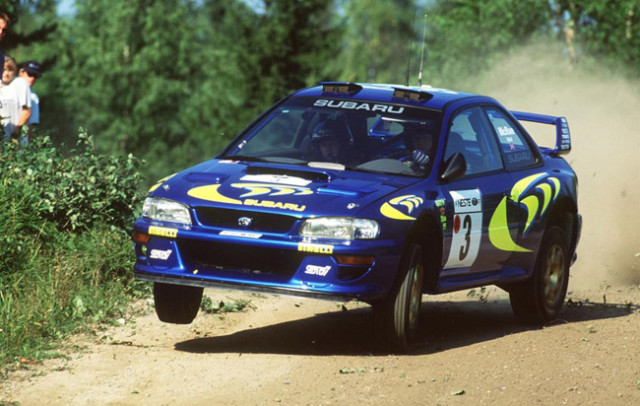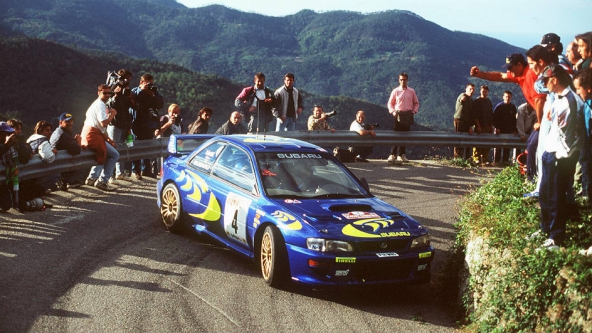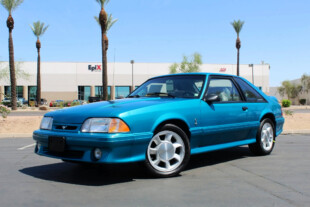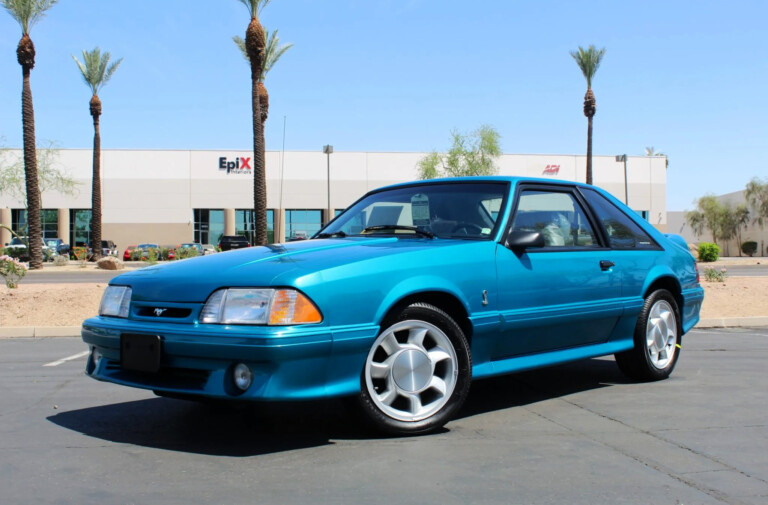It’s possibly the most iconic Subaru rally car ever conceived: the WRC97. There haven’t been many rally cars as attractive as this one. Quirky, sure, but while the WRC97 wasn’t classically beautiful like a Jaguar XKE, it was a machine with its own sort of presence on the rally stage. It also went very quickly too, and had the dramatic driving style of Colin McRae pushing this car into the imaginations of young rally fans the world across.
Built to capitalize upon the change in rally car formula at the time, the WRC97 was a project that brought on some of the great minds in automotive design at the time. Peter Stephens, the man behind the styling of the McLaren F1, was on hand to give the Subaru evocative lines, wide hips, a snarling front end, and bulldog shoulders.
The regulations allowed for major changes to the engine’s internals, vehicle width, suspension geometry and aerodynamics. The car retained the same length of the road car but its width grew by 80 mm, and the bodyshell sat 15 mm lower. The engine was moved further back to improve weight distribution, and a wider track was typically used to aid stability, though on certain gravel stages, the team would utilize a narrow track to easily follow the ruts left by their competitors.
Of course, there were other aspects to the car that made it iconic. Namely, the scintillating flat-four soundtrack, 300 horses and a responsive turbocharger, modified cams, combustion chamber, and cylinder ports. Increased combustion and a redesigned manifold meant power came on 1,000 rpm sooner than its predecessor was able to. The new rules replacing the outgoing Group A formula were less restrictive, and allowed designers to play with chassis tweaks as well as aerodynamics as they previously hadn’t been able to.
The car’s wider haunches suggested an emphasis on handling here, and that was true. Using CAD software to design the stiffest cage and chassis possible, the car turned in with lightning precision. It’s amazing to watch McRae’s masterful dance with the wheel, gearshift, and pedals, and how every input is perfectly responded to by the machine. Though aggressive, McRae has an almost delicate touch, and manages to get the most out of the little machine without seeming to break a sweat. It’s a harsher style that resulted in plenty of crashes, but it won over hordes of fans.
When Tiff tried his hand at the machine, the former-Formula 1 driver and touring car champ did not disappoint. Cautiously, Tiff found the limits of the car and ended up posting a time just ten seconds off that of McRae. Considering the man had little experience behind the wheel of the rally car speaks volumes to his driving ability, but it also suggests the car was supremely confidence inspiring. It would have to be for McRae to pull off some of the stunts he did.

Never short on exuberance, McRae’s wild style helped make Prodrive-built WRC97 a legendary rally car.






















